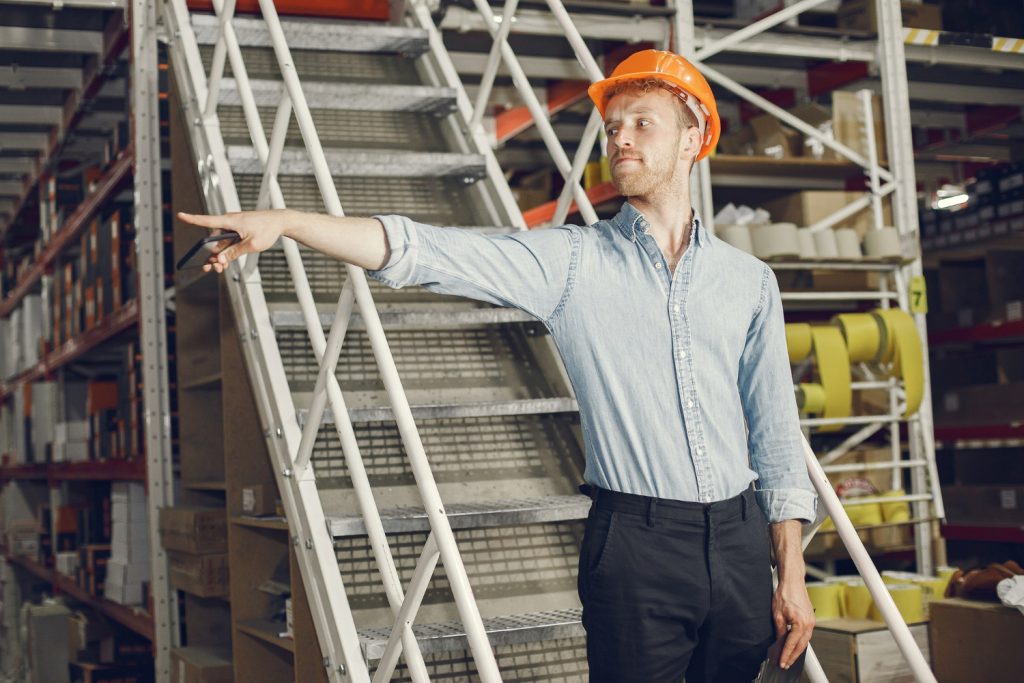
Ensuring safety when working at heights is essential in industrial environments. Accidents involving falls can have severe consequences for both workers and organizations. One of the most effective ways to reduce these risks is by following best practices and adopting reliable equipment for the job. Whether you are using ladders or stationary platforms, it is essential to prioritize safety and select the appropriate tools. For a comprehensive selection of industrial-grade solutions, consider Platforms and Ladders for your workplace needs.
Adhering to proper procedures and using the correct equipment makes a significant difference in accident prevention. Sufficient training, thorough inspections, and an understanding of necessary fall protection systems form the foundation of a safe work culture. This guide reviews the essential steps to creating and maintaining a secure working environment when using industrial ladders and platforms.
Understanding the Risks
Falls from ladders and elevated platforms consistently rank among the top causes of industrial workplace injuries. Missteps, such as using damaged ladders, placing them on uneven surfaces, or overreaching from heights, introduce significant hazards. Recognizing these dangers is a crucial step toward minimizing accidents and protecting workers. The simple act of selecting the right equipment for each task, combined with strict adherence to established protocols, can prevent many common causes of workplace falls.
Hazards may not always be obvious; improper setup, inattention during use, and neglecting regular maintenance can all result in dangerous conditions. Workers should be trained to identify structural weaknesses such as loose bolts, bent rails, or missing rungs, and empowered to report concerns immediately. Promoting open communication about safety helps foster a culture where risk avoidance is the collective responsibility.
Beyond the workplace, organizations such as the Occupational Safety and Health Administration (OSHA) provide valuable guidelines on the proper use of ladders and platforms. According to OSHA, falls remain a top-cited workplace violation, underscoring the importance of adhering to established safety rules. For further reading on workplace accident statistics and recommendations, visit the resources provided by the National Institute for Occupational Safety and Health (NIOSH).
Pre-Use Inspection
Thorough inspections are mandatory before setting foot on any ladder or industrial platform. By catching issues early, employees can prevent avoidable injuries and downtime. Inspections should include a detailed review of:
- Structural integrity, checking for any visual damage or warping.
- All locking mechanisms or fold-out supports are required for full functionality.
- Cleanliness—oily, wet, or greasy surfaces that may lead to slips.
Consistent inspection routines, backed by clear documentation, provide a verifiable record for compliance and incident review in the event of an accident. Supervisors should periodically audit inspection practices to ensure compliance and proper record-keeping. Regular inspection of equipment is a crucial safety requirement.
Proper Setup and Use
Setting up and using platforms and ladders properly is equally critical. Ladders must be placed on stable, level ground and kept clear of obstructions. Be sure to:
- Secure both the base and top to prevent shifting during use.
- Observe the 4:1 placement rule: for every four feet of ladder height, position the base one foot from the supporting structure.
- Always face the ladder and keep your body centered between the rails to avoid tipping.
Never carry heavy loads while climbing, and avoid wearing footwear that can easily slip or become entangled. When working from a platform, anchor all tools or materials to prevent falling objects. Supervisors can mitigate risks by ensuring work areas are well-lit and free from trip hazards.
Best Practices for Working on Ladders
- Maintain three points of contact—two hands and one foot, or two feet and one hand, at all times.
- Avoid overreaching; constantly reposition the ladder instead of stretching.
- Never use the top steps of a ladder as a standing platform.
Fall Protection Systems
Fall protection is required when working at height according to federal law. OSHA specifies that ladders taller than 24 feet must be equipped with either a personal fall arrest system or a ladder safety system, such as cages or wells, to mitigate the risk of serious falls. Workers must be equipped with harnesses and lanyards that are regularly inspected and properly fitted to ensure their safety. Adherence to these standards significantly increases survivability and reduces the likelihood of severe outcomes in the event of a fall.
Alternatives to Ladders
Work at height can often be performed more safely using platforms like scaffolds or mobile work platforms. For extended tasks, these alternatives offer increased stability, substantial working surfaces for tools and materials, and additional safety features, such as guardrails. The “Ladders Last” initiative emphasizes the importance of replacing ladders with more secure alternatives whenever feasible, thereby reducing reliance on traditional ladders for tasks not suited to their use.
Training and Education
Proper training is a cornerstone of any effective safety program. Workers should receive comprehensive, hands-on instruction that covers ladder setup, equipment care, the use of fall protection, and emergency protocols. Refresher courses and updates regarding regulation changes are essential for keeping all personnel informed and proficient. Statistical research published by The National Safety Council (NSC) shows that trained employees experience drastically fewer incidents than untrained individuals, emphasizing the tangible value of ongoing safety education.
Conclusion
Maintaining a culture of safe work practices is crucial for any organization that relies on industrial platforms and ladders. Regular inspections, adherence to setup protocols, mandatory use of fall protection, adoption of safer alternatives, and hands-on training all play a critical role in minimizing risks. Investing in the right equipment and robust educational programs protects workers, supports greater productivity, and fosters peace of mind in the workplace.